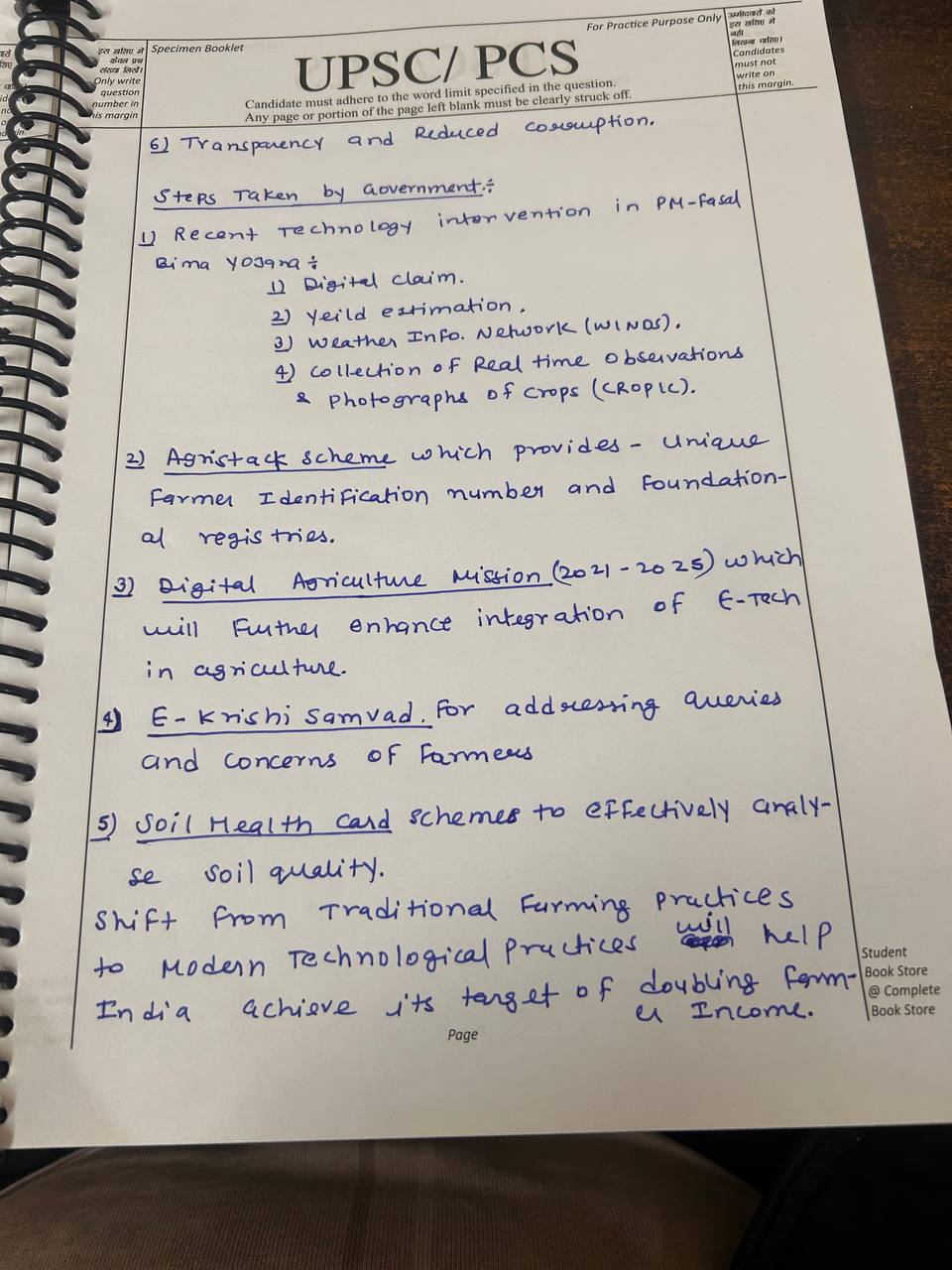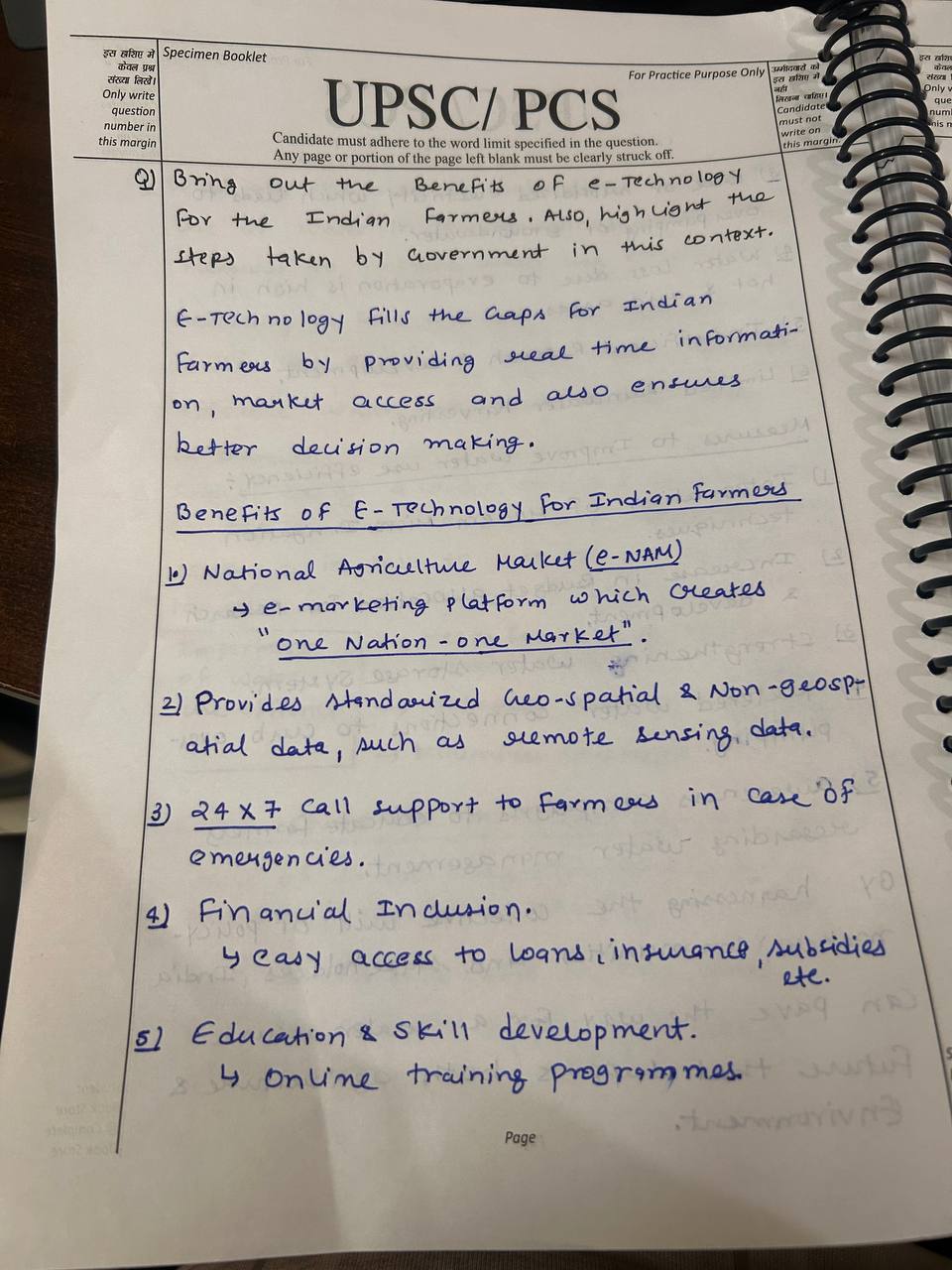Highlight the advantages of e-technology for farmers in India. Additionally, describe the actions the government has done in this regard. (Answer in 200 words)
The spread of mobile technologies, remote-sensing services, and distributed computing is improving farmers' access to information, inputs, and markets, increasing production and productivity, streamlining supply chains, and reducing operational costs. According to a report by the Ministry of ElectroRead more
The spread of mobile technologies, remote-sensing services, and distributed computing is improving farmers’ access to information, inputs, and markets, increasing production and productivity, streamlining supply chains, and reducing operational costs. According to a report by the Ministry of Electronics and Information Technology and McKinsey & Company, India has a potential economic value of $50-65 billion through digital agriculture by 2025. However, there remain certain challenges in realizing the potential of digital agriculture in India. These include:
- Lack of coherent data: Machine learning algorithms require large, indexed, and standardized data sets, which are currently scarce. For example, if one is developing an early pest detection solution using an image, then a large data set of images is needed.
- Viability of technology: Digitization requires sensors, mechanization for precision farming, and connectivity, which are not viable for a majority of Indian farmers, as most of the farmers possess small and fragmented land holdings.
- Cost-benefit analysis: Precise financial estimates of the cost of technology per unit of land/ per individual farmer and corresponding savings/return on investments are not available yet in the Indian context, which makes it doubly difficult to evaluate the technology from the perspective of economic aspects.
- High capital requirement: Installation of digital technologies requires high capital cost, which would discourage its adoption among Indian farmers who remain constrained for credit.
- Inadequate investments in agricultural R&D: In 2021-22, the Department of Agricultural Research and Education was allocated Rs 8,514 crore (out of Rs.1,31,531 crore for the Ministry) of which actual expenditure fell short (-10%) of allotment.
The role PPP ecosystem is expected to play in addressing the associated challenges:
- The emergence of a start-up ecosystem: Under a PPP model for agriculture, a start-up ecosystem can drive emerging technological innovations and agile business models, while universities and research institutions can bring in domain-level agricultural expertise and help validate the solutions for scaled deployments.
- Increased productivity and profit: Studies suggest that farm-level digital advisory services can enhance productivity by 15%. There is also the potential for 40-60% of the agricultural surplus to be sold through digital marketplaces by 2025, reducing waste and helping improve farmer price realization by 10%. For instance, the E-Sahamathi initiative of Karnataka enables the sharing of agriculture and horticulture data from its database of more than 7 million farmers with start-ups/ service providers from its FRUITS (Farmer Registration and Unified Beneficiary Information System) platform.
- Convergence with public institutions: The convergence of public institutions for digital services, in partnership with start-ups and industry, will help provide the benefits of technology to smallholding farmers in order to achieve better incomes and greater sustainability thereby making Indian agriculture globally competitive and remunerative for farmers.
In this regard, the government of India 2021 launched an initiative to enable a multi-stakeholder ecosystem named IDEA (India Digital Ecosystem for Agriculture), which will open up infrastructure, data sets, academic and research expertise, and innovative policies in order to partner with a huge private ecosystem.
See less


See less